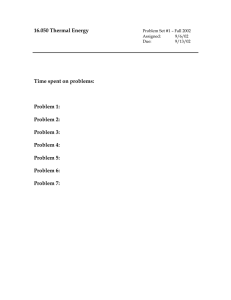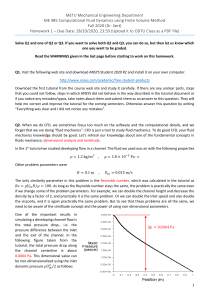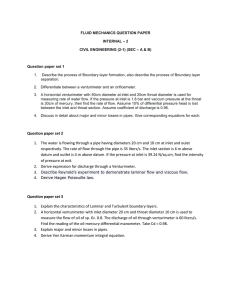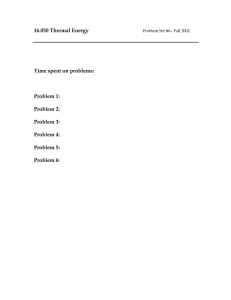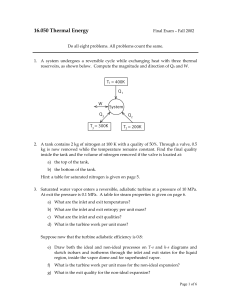MEGR 3121 Quiz Name - Personal Web Pages
advertisement
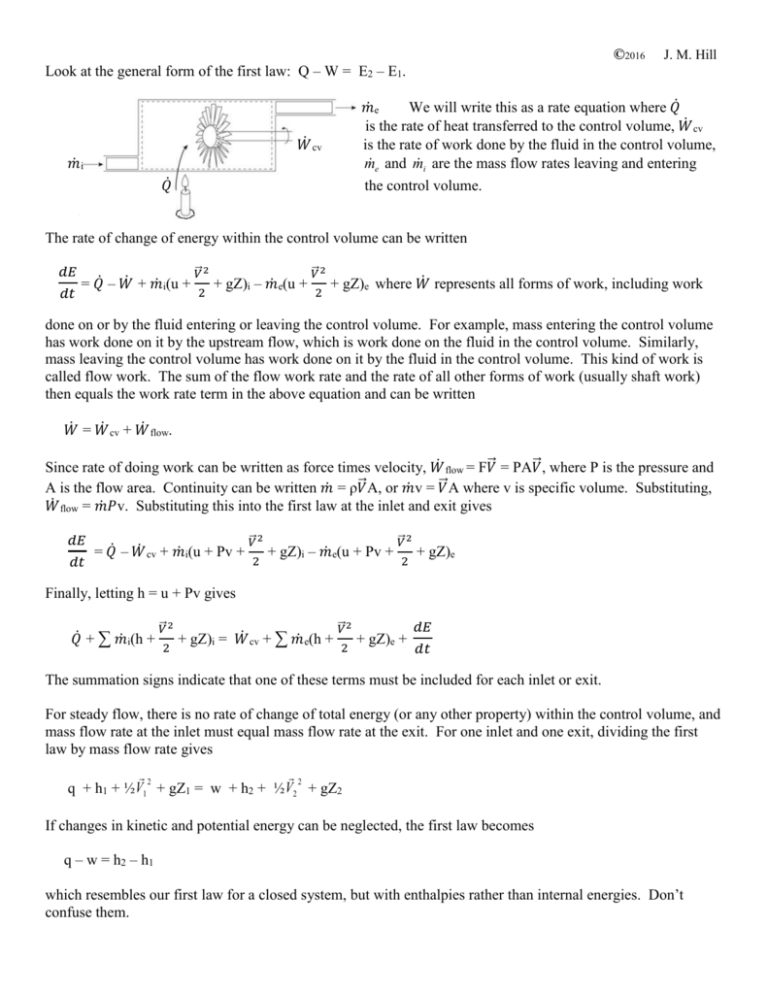
©2016 J. M. Hill Look at the general form of the first law: Q – W = E2 – E1. 𝑚̇e We will write this as a rate equation where 𝑄̇ is the rate of heat transferred to the control volume, 𝑊̇ cv is the rate of work done by the fluid in the control volume, me and mi are the mass flow rates leaving and entering the control volume. 𝑊̇ cv 𝑚̇i 𝑄̇ The rate of change of energy within the control volume can be written 𝑑𝐸 𝑑𝑡 ⃗2 ⃗2 2 2 𝑉 𝑉 = 𝑄̇ – 𝑊̇ + 𝑚̇i(u + + gZ)i – 𝑚̇e(u + + gZ)e where 𝑊̇ represents all forms of work, including work done on or by the fluid entering or leaving the control volume. For example, mass entering the control volume has work done on it by the upstream flow, which is work done on the fluid in the control volume. Similarly, mass leaving the control volume has work done on it by the fluid in the control volume. This kind of work is called flow work. The sum of the flow work rate and the rate of all other forms of work (usually shaft work) then equals the work rate term in the above equation and can be written 𝑊̇ = 𝑊̇ cv + 𝑊̇ flow. ⃗ = PA𝑉 ⃗ , where P is the pressure and Since rate of doing work can be written as force times velocity, 𝑊̇ flow = F𝑉 ⃗ A, or 𝑚̇v = 𝑉 ⃗ A where v is specific volume. Substituting, A is the flow area. Continuity can be written 𝑚̇ = ρ𝑉 𝑊̇ flow = 𝑚̇𝑃v. Substituting this into the first law at the inlet and exit gives 𝑑𝐸 𝑑𝑡 = 𝑄̇ – 𝑊̇ cv + 𝑚̇i(u + Pv + ⃗2 𝑉 2 + gZ)i – 𝑚̇e(u + Pv + ⃗2 𝑉 2 + gZ)e Finally, letting h = u + Pv gives ⃗2 ⃗2 𝑑𝐸 2 2 𝑑𝑡 𝑉 𝑉 𝑄̇ + ∑ 𝑚̇i(h + + gZ)i = 𝑊̇ cv + ∑ 𝑚̇e(h + + gZ)e + The summation signs indicate that one of these terms must be included for each inlet or exit. For steady flow, there is no rate of change of total energy (or any other property) within the control volume, and mass flow rate at the inlet must equal mass flow rate at the exit. For one inlet and one exit, dividing the first law by mass flow rate gives 2 2 q + h1 + ½ V1 + gZ1 = w + h2 + ½ V2 + gZ2 If changes in kinetic and potential energy can be neglected, the first law becomes q – w = h2 – h1 which resembles our first law for a closed system, but with enthalpies rather than internal energies. Don’t confuse them.






